
views
Making a Basic Pocket Fold

Lay your napkin face-down on a hard, flat surface. A table or kitchen counter are both great options. Make sure you’ve wiped off your work surface in advance to prevent any grease or dirt from staining your clean napkins. A cloth napkin will be easiest to fold, but you can also use a paper napkin as long as it is a square. Be gentle with a paper napkin, however, which is more fragile and could rip if you aren’t careful. If there are any stubborn wrinkles in your cloth napkin, use an iron to smooth them out.
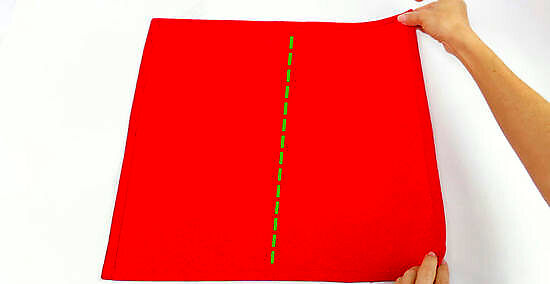
Fold your napkin in half vertically. Pinch the top and bottom corners on either the right or left side of the napkin, then pull them over to meet the top and bottom corners on the other side. Make sure the edges are all lined up, then smooth the crease with your hand. Ironing your cloth napkins with starch will make them stiffer and easier to fold.
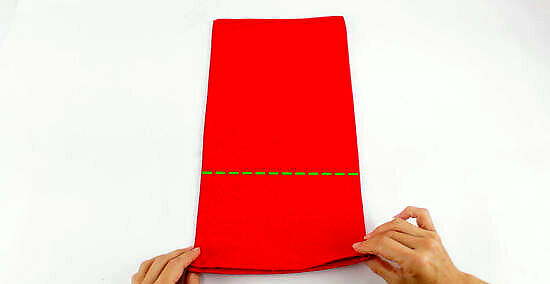
Fold the bottom edge of the napkin up, a little past halfway. Grab the bottom edge of your folded napkin and bring it up so it’s slightly past the middle point of the napkin. Make sure the vertical edges are lined up. Use your hand to smooth the new crease.
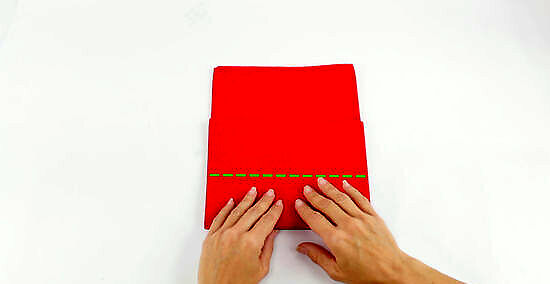
Fold the new bottom crease up so it meets the original bottom edge. Grasp the newly-creased bottom edge of the napkin with your fingers. Fold it up so it lines up with the original bottom edge, which is now folded up toward the center of the napkin. Press down on the crease with your fingers to secure it.

Turn the napkin over so the folded part stays along the bottom. Flip the napkin horizontally so that the folded section remains closest to you. When you turn it over, make sure to do it carefully so none of the folds fall out. Smooth the napkin out with your hands once you’ve turned it over.
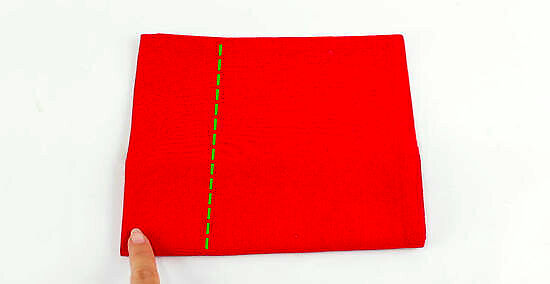
Fold the left edge into the center of the napkin. Grasp the left edge of the napkin and fold it over into the middle of the napkin. Press down on this fold with your hands to crease it. You will see the pocket beginning to appear along the bottom of the napkin when you make this fold.
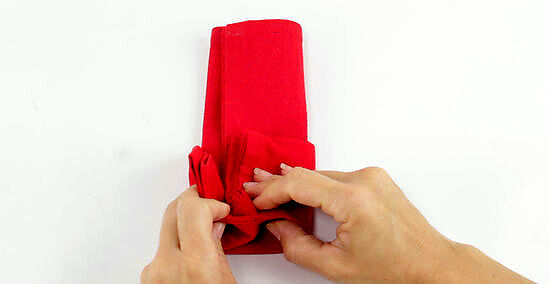
Tuck the right corner into the small pouch on the left. Grab the right edge of the napkin and fold it into the center as well. Insert the bottom corner into the open pocket along the bottom of the left flap that you created with the previous fold. Smooth it out a bit and make sure that the corners are aligned so that the right and bottom edges of the napkin are all straight.
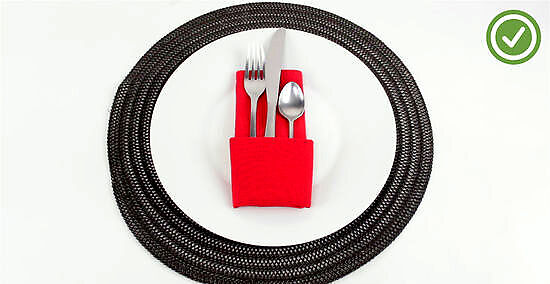
Flip the napkin over and insert utensils or other items into the pocket. The pocket is most often used to hold forks, spoons, and knives. But you can easily slip in a printed menu, a name card, or even a bunch of thin breadsticks for an appetizer! This is the most basic technique for folding a napkin with a pocket.
Folding an Angled Napkin Pocket
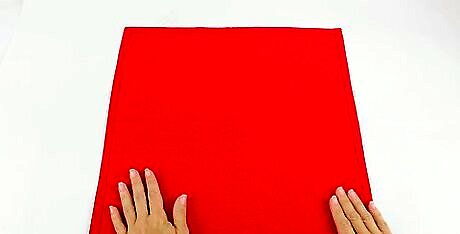
Place your napkin flat on a hard surface with the seam side down. You should be working with a square napkin. Cloth napkins—either cotton or linen—are best for folding, but if you’re gentle you can also complete these folds with a square paper napkin. A table or countertop is a great workspace. Make sure that your folding surface is completely clean before placing the fresh napkin down.
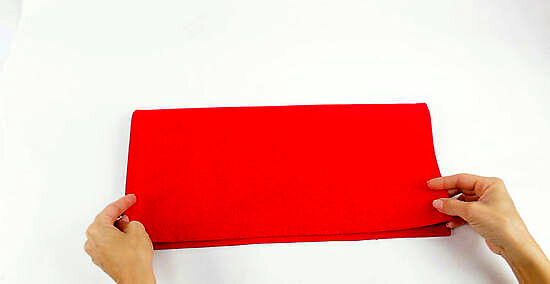
Fold the napkin in half horizontally. Grasp the top two corners and pull them down to meet the bottom two corners. Smooth your hands over the fold to crease it fully.
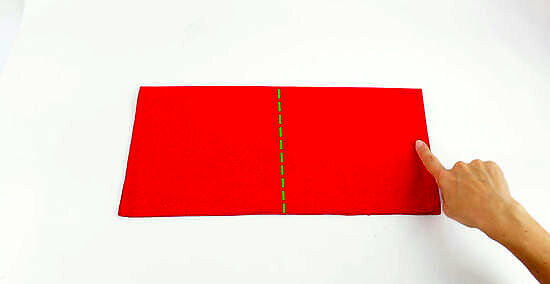
Fold the napkin in half again, this time vertically. Grasp the right two corners of the folded napkin and bring them over to meet the left two corners. Make sure the edges are completely aligned, then press down on the fold with your fingers. You napkin will now be folded into quarters. It will look like a small square.
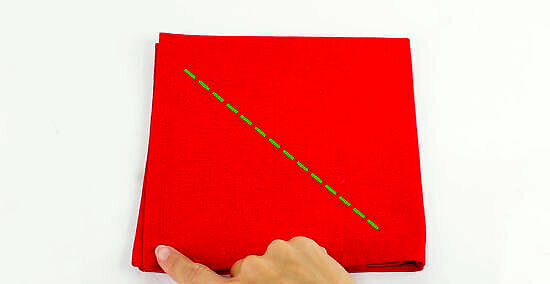
Bring the lower left corner of the top layer to meet the upper right corner. For this fold, you’ll work only with the top layer of your folded napkin. Pinch the bottom left corner and fold it up so it meets the top right corner. Smooth the fold with your hands. This will create a diagonal fold going from the top left corner to the bottom right corner.
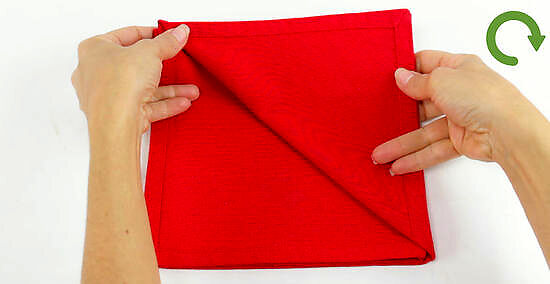
Flip the napkin over and towards you. Hold the top two corners and bring them towards you as you turn the napkin over. Now, they'll be the bottom two corners of the folded napkin. Be gentle as you flip the napkin to make sure you don’t lose any of the folds you’ve already made. Smooth out this side of the napkin with your hands to eliminate any wrinkles.
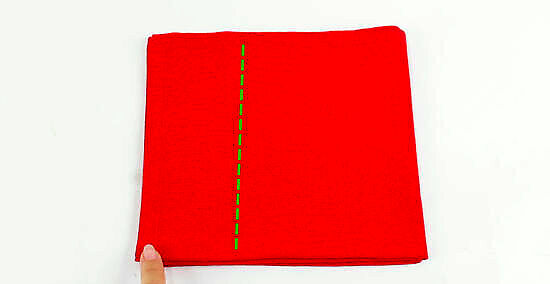
Fold the right edge into the center of the napkin. Grab the top and bottom corners on the left and fold them over them to the middle of the folded napkin. The top and the bottom edges should line up. Press down on the crease with your fingers to flatten the napkin. This fold creates a small, triangular pocket along the left bottom of the napkin.
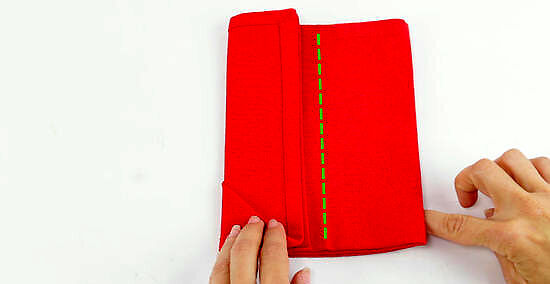
Tuck the bottom right corner into the small pouch on the left. Fold over the right side of the napkin so that the right edge lines up with the far left edge. Insert the bottom corner of this flap into the small triangular pouch along the bottom left. Smooth it out a bit, double-checking that the corners are lined up and the bottom and right edges of the napkin are all straight.
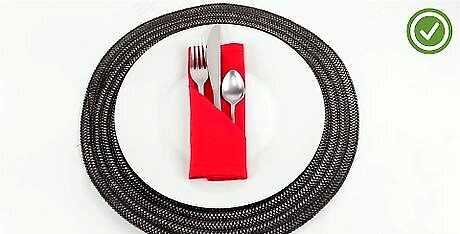
Turn your napkin over and slide silverware into the angled pocket. This technique results in a single pocket with a diagonal edge. It’s a slight twist on the basic pocket fold, but can be used in exactly the same way—an elegant place to tuck away utensils. You can also use the pocket as a stylish place to store place cards or menus.
Creating a Double Pocket Fold
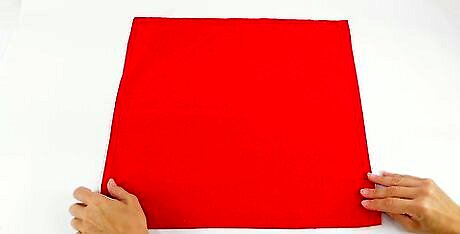
Begin by laying your napkin flat on a hard surface. Cloth napkins, made of materials like cotton and linen, are your best bet for folding. However, it’s possible to complete these techniques using a paper napkin—just make sure it’s square in shape and that you are especially gentle as you fold to prevent any tears. Double-check that your folding surface is completely clean before laying down your fresh napkins. If your cloth napkins have any stubborn folds, you may want to iron them before you begin for a more polished finished product.
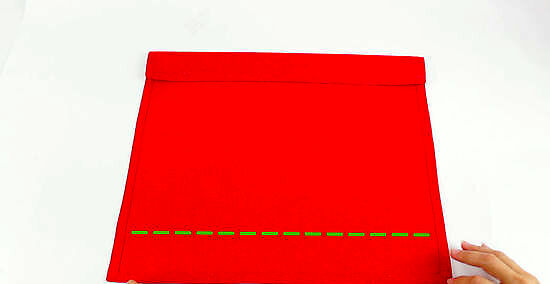
Fold in the top and bottom edges if you want to hide the borders. Fold down the top edge and fold up the bottom. Each fold should be roughly 2 inches (5.1 cm) long. Make sure to press down on the creases with your fingers to create a secure fold. This step is optional—you can skip it and still create a double-pocket napkin fold.
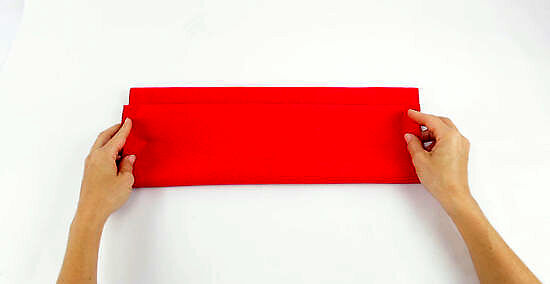
Bring the bottom edge up so it is just below the top edge. Grasp the bottom edge of the napkin and fold it up so it’s about 1 inch (2.5 cm) below the top edge. Both edges should remain parallel to each other, and the side edges should line up. Keep smoothing each crease flat with your hands for a crisper fold.
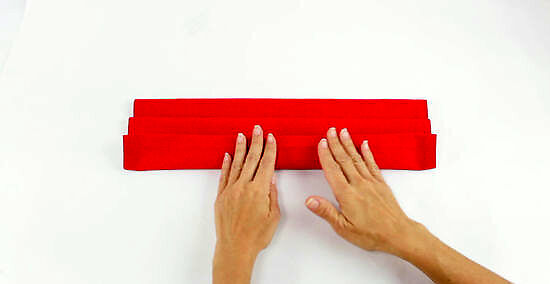
Fold the new bottom edge up so it’s just below the original bottom edge. Grab the newly-creased bottom edge with your fingers and fold it up again. It should be roughly 1 inch (2.5 cm) below the original bottom edge, which itself is positioned 1 inch (2.5 cm) below the top edge. At this point, your folded napkin should have three narrow rectangular sections.
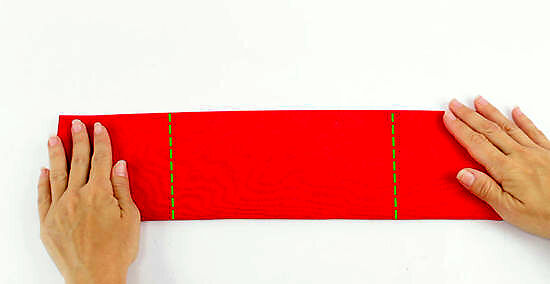
Turn your folded napkin over and fold into thirds. Flip your napkin horizontally, so the bottom edge stays closest to you. Fold in the right third, then fold in the left third. Smooth these folds down with your hand to secure the creases.
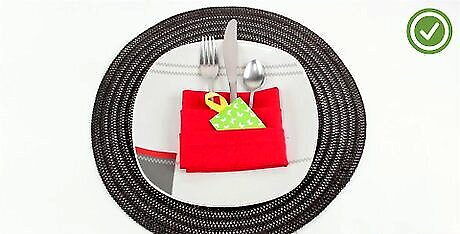
Turn it back over carefully and add items to both pockets. Make sure to hold it securely in your hands while you flip it back around. Since this folding technique doesn’t include a corner tuck like the single pocket folds, so it’s more susceptible to unfolding as you flip it back over. You may need to smooth down the folds again once you’ve put the napkin in place on your table. This napkin folding technique results in two pockets, an upper one and a lower one. Consider placing the utensils in the top pocket and a name card in the lower pocket.














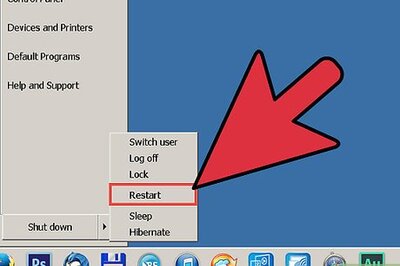



Comments
0 comment